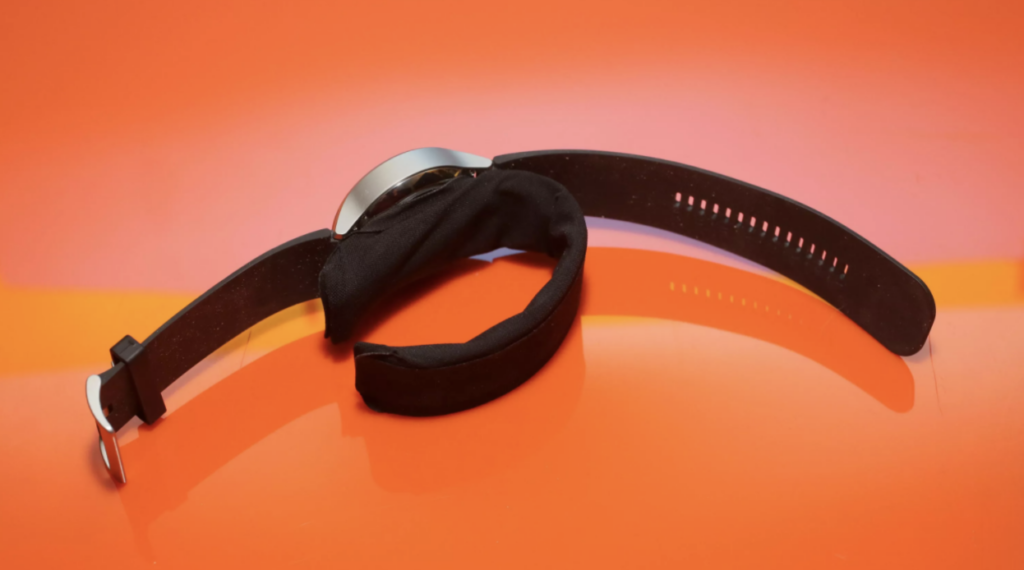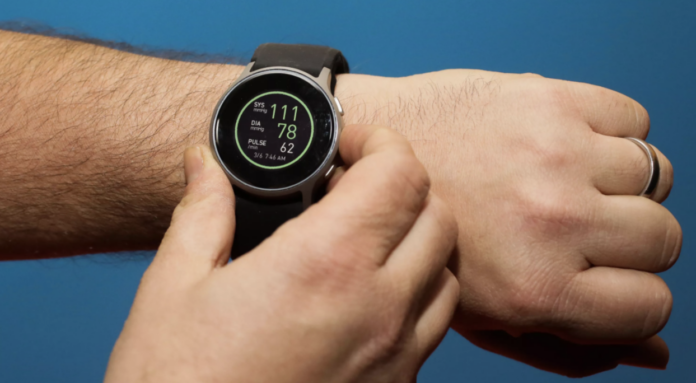I’ve been wearing the Omron HeartGuide on my wrist for several weeks now. It’s the first FDA-cleared fitness watch that’s a real, serious blood pressure monitor. It gave me a glimpse at what could be the next big frontier for wearable tech. It’s fascinating and essential to me, but in its current form it won’t be for everyone yet.
When it comes to monitoring anything in my life, health-wise, blood pressure is the one I need to keep tabs on the most. I’ve had hypertension, high blood pressure, for years. I see a cardiologist regularly. I take medication. I use a home cuff (or am supposed to) for monitoring. None of this is fun.
Blood pressure isn’t an easy technology to crack for easy, portable use. I’ve tried smaller versions of the inflatable arm cuffs, but they’re still the sort of things you’d need to stick in a backpack.
The HeartGuide doesn’t have any new types of optical sensors onboard. The blood pressure tech involves an inflating bladder on the inside that you can actually feel pressurizing over your wrist. Starting a reading is really simple: press the top button and then lift the watch to heart level. It buzzes when the elevation is correct, and starts to take a measurement, which takes about 30 seconds. You have to stay still during the reading.
Suddenly, I started checking on my blood pressure in places I never used to: at the movies, watching How To Train Your Dragon with the kids. At the mall. During breakfast. In the middle of Cheesecake Factory, long lines and screaming kids, deep in suburban New Jersey. The process becomes addictive.
It also means that I’m finally checking my blood pressure, something I’ve avoided doing at home for literally months. If nothing else, that’s the biggest success of the idea of a blood pressure watch: it helps me stay aware.
The readings, right now, are all manual. A future update that awaits FDA clearance will take nocturnal readings while sleeping, for results that no current blood pressure device can even do, and might help raise awareness of unknown conditions while sleeping, or effects of medication at night.
Know this: the Omron HeartGuide isn’t designed to be your everyday smartwatch replacement. It’s big, topping even the bulkier GPS watches I’ve tried, and it dwarfs everyday smartwatches like the Apple Watch and Fitbit Versa. The metal case and transflective always-on display feel like a super-sized Garmin running watch. And there’s no touchscreen, instead just three side buttons that handle blood pressure readings, cycling through fitness stats and Bluetooth pairing. The wrist strap is the bulkiest component of all.

It’s a big watch to sleep with: that thick cuff isn’t very comfy. I also had to make sure to take it off before showering.
Omron’s not intending for the HeartGuide to be an everyday device for everyone: in fact, it seems targeted to older men who have enough disposable income to afford it. But, hopefully, it’s a sign of where more affordable, wearable blood pressure tech could be headed.
This article addresses the pros and cons of the Omron HeaGuide which is a heart rate monitor watch. Some of the flaws include the physical design of the product. Although technology may not be there yet to use a different method, the watch essentially is a smaller version of a blood pressure cuff. And because it needs a part to inflate, the watch is very bulky. As the author mentioned, its shape is uncomfortable to sleep in. This is not a problem with this model because the readings are manual, but for the future of wrist monitors, comfort is a very important design component to consider.
The manual readings also can limit the effectiveness of the device, as a lot of the blood pressure spikes might occur when readings are not being taken. However, the author brings up that although it is not a perfect device it is a step in the right direction. For one it made tracking his blood pressure much more convenient and accessible. One of the most important parts of this device is the awareness it brings to the user.




